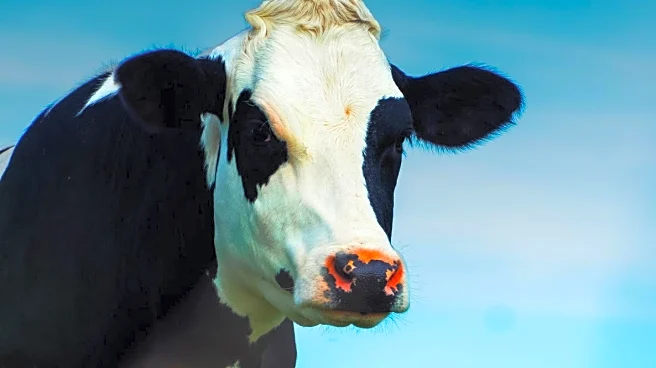What's Happening?
A recent genomic study has provided new insights into the Lumpy Skin Disease Virus (LSDV) affecting cattle in Bangladesh. Utilizing Next-Generation Sequencing (NGS), researchers analyzed the genome-wide structure of the LSDV isolate from recent outbreaks.
The study revealed a high degree of genetic conservation, with 99.9% concordance with existing strains, but also identified several minute point mutations and small structural variations unique to the local strain. These findings are expected to pave the way for developing targeted control measures, including therapeutic interventions and vaccine formulations tailored to the strains circulating in Bangladesh. The study highlights the virus's genetic architecture, identifying 156 unique protein-coding sequences and providing insights into the virus's functional diversity.
Why It's Important?
The study's findings are significant for agricultural productivity, as LSDV poses a major threat by causing fever, nodular skin lesions, and economic losses due to decreased milk and meat production. By understanding the genetic characteristics of the virus, researchers can develop more effective control strategies, potentially reducing the impact of the disease on the cattle industry. The insights into the virus's genetic architecture and the role of repetitive DNA sequences offer a deeper understanding of its evolutionary dynamics and pathogenesis, which could lead to improved management and prevention strategies globally.
What's Next?
The study suggests that the identified repetitive elements play a crucial regulatory role in gene transcription and genome organization, enabling the virus to adapt swiftly to host environments. This understanding could lead to the development of more precise and effective control measures, including vaccines and therapeutic interventions. As researchers continue to explore these genetic features, the findings may contribute to a broader understanding of LSDV and similar viruses, potentially influencing global strategies for managing viral diseases in livestock.
Beyond the Headlines
The study's focus on repetitive DNA sequences, previously considered 'junk' DNA, highlights their importance in viral genome stability and host adaptation. This shift in understanding could influence future research on viral genetics and the development of control measures for other viral diseases. The study also underscores the importance of genomic research in addressing global agricultural challenges, emphasizing the need for continued investment in scientific research to combat emerging diseases.
















